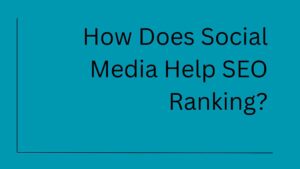The term “Internet of Things” (IoT) may sound like a futuristic buzzword, but it’s already a massive part of our daily lives. From smart homes and fitness trackers to connected cars and industrial systems, IoT is changing how we interact with the world. But what exactly is the Internet of Things? Let’s dive deep into what it means, how it works, and why it’s reshaping industries and personal experiences alike.
What is the Internet of Things (IoT)?
In the simplest terms, the Internet of Things (IoT) refers to a network of physical objects—often called “things”—that are embedded with sensors, software, and other technologies to connect and exchange data with other devices and systems over the internet. These “things” can range from your smartwatch or home thermostat to large-scale industrial equipment or smart cities.
The goal of IoT is to create a more interconnected and intelligent world where devices can talk to each other, gather insights, automate processes, and provide real-time data that enhances efficiency, safety, and convenience. For example, imagine your coffee machine starting to brew coffee as soon as your alarm goes off, or your refrigerator reminding you that you’re low on groceries.
History of the Internet of Things
While IoT might seem like a modern concept, the idea has been around for decades. The journey to the IoT we know today began in the late 20th century, evolving alongside advancements in technology and connectivity.
Early Beginnings (1980s-1990s)
The concept of connecting devices was first discussed in the 1980s, but the technology to support it was far from ready. However, one of the earliest examples of IoT in history dates back to 1982, when a Coca-Cola vending machine at Carnegie Mellon University was connected to the internet to report inventory levels and whether the drinks were cold.
It wasn’t until the late 1990s that the term “Internet of Things” was coined by Kevin Ashton, a British technology pioneer, while working on a project for Procter & Gamble. Ashton envisioned a world where everyday objects could communicate over the internet, collecting data and making decisions without human input.
Rapid Growth (2000s-Present)
By the 2000s, advancements in sensor technology, wireless connectivity, and cloud computing began to turn the vision of IoT into reality. Devices started becoming smarter, smaller, and more affordable. The development of IPv6 (Internet Protocol version 6) expanded the pool of IP addresses available, allowing billions of devices to connect online.
Today, IoT has exploded in popularity, and industries across the globe—from healthcare and agriculture to manufacturing and urban planning—are integrating connected devices into their systems.
How Does IoT Work?
At the heart of the Internet of Things lies connectivity and communication between devices. Here’s a breakdown of how IoT works step-by-step:
1. Sensors and Devices
Every IoT system starts with sensors and devices that collect real-time data from their environment. These sensors can measure a variety of data points—temperature, motion, humidity, light, etc. For example, a sensor in a smart thermostat collects temperature data to determine whether to cool or heat your home.
2. Connectivity
Once data is collected, it needs to be transmitted. IoT devices are connected via different networks and communication protocols such as Wi-Fi, Bluetooth, cellular networks, or even satellites. The choice of connectivity depends on the device and its application. For example, a wearable fitness tracker uses Bluetooth to connect to your phone, while industrial equipment might rely on a cellular network.
3. Data Processing
Once the data reaches a cloud platform or edge device, it is processed. This stage can involve basic analysis, like checking if the temperature is within a certain range, or it can involve complex computations using AI and machine learning to generate insights.
4. User Interface (UI)
Finally, the processed data is made available to the user through a UI, which could be an app, dashboard, or notification system. Users can interact with the device, make adjustments, or simply monitor activity. For example, you could adjust your smart lights via a smartphone app or receive a notification that your smart security camera detected movement.
Why is the Internet of Things (IoT) so Important?
You might wonder why IoT is such a big deal. The short answer? IoT is transforming industries and improving everyday life in ways that were unimaginable just a few years ago.
1. Automation and Efficiency
By allowing machines to collect, process, and act on data autonomously, IoT is paving the way for automation on a massive scale. In industrial settings, IoT enables predictive maintenance, meaning machines can monitor their own health and notify technicians before breakdowns occur. This can save businesses time and money, while also preventing costly downtime.
2. Improved Decision Making
IoT devices provide a constant stream of real-time data. This data can be analyzed to offer insights that help businesses and individuals make more informed decisions. For instance, farmers using IoT sensors can monitor soil conditions and optimize irrigation schedules to maximize crop yields.
3. Enhanced Safety and Security
In the realm of security, IoT devices such as connected cameras, smart locks, and motion sensors make it easier to monitor and protect homes and businesses. Beyond physical security, the Internet of Things (IoT) can also improve cybersecurity by identifying vulnerabilities in connected devices and networks in real-time.
4. Convenience
IoT can significantly improve our quality of life by automating routine tasks. Think of smart homes where lights, appliances, and heating systems adjust based on your preferences or wearable devices that monitor your health and alert you to potential issues.
What Technologies Have Made IoT Possible?
Several technological advancements have come together to enable the widespread adoption of IoT. Without these breakthroughs, the Internet of Things (IoT) as we know it today wouldn’t exist.
1. Low-Cost Sensors
The development of affordable, reliable sensors has been a key enabler of IoT. These sensors can be embedded into all kinds of devices to monitor environmental conditions, detect motion, or measure electrical currents.
2. Connectivity
Faster and more widespread internet connectivity, particularly with the advent of 5G, has allowed devices to communicate more efficiently and reliably. This is essential for IoT applications that require real-time data transmission, such as autonomous vehicles or remote medical devices.
3. Cloud Computing
The explosion of cloud computing services has provided a flexible and scalable platform for storing and analyzing vast amounts of data generated by IoT devices. Cloud platforms can process this data and provide actionable insights without the need for heavy on-site infrastructure.
4. Artificial Intelligence and Machine Learning
AI and machine learning have taken IoT to the next level by enabling smart devices to learn from data, make predictions, and improve their performance over time. For example, smart home devices like thermostats can learn your daily routine and adjust settings to maximize energy efficiency.
5. Edge Computing
Edge computing reduces latency by processing data closer to where it’s generated rather than relying solely on the cloud. This is particularly important for applications like autonomous driving, where even a slight delay in data processing can have serious consequences.
Benefits of Deploying IoT for Businesses
IoT is not just a consumer trend; it’s transforming industries across the board. Here are some key benefits businesses can gain by deploying IoT:
1. Cost Reduction
One of the most significant benefits of IoT is its ability to reduce operational costs. In manufacturing, IoT-enabled equipment can monitor itself and predict when maintenance is needed, avoiding costly breakdowns and minimizing downtime. Similarly, smart energy management systems can help businesses save on utility costs by optimizing resource usage.
2. Improved Operational Efficiency
IoT helps streamline processes by providing real-time insights into operations. This allows businesses to optimize workflows, monitor assets, and respond quickly to changes. For example, logistics companies can track shipments in real time, reducing delivery times and improving customer satisfaction.
3. Enhanced Customer Experience
IoT can also improve customer service by enabling more personalized and responsive interactions. Retailers, for example, can use IoT to track customer behavior and preferences, allowing them to offer tailored recommendations and promotions.
4. Better Product Quality
In manufacturing, IoT sensors can monitor production lines to ensure quality control. Any discrepancies in temperature, humidity, or other environmental factors can be identified and corrected immediately, reducing waste and ensuring higher product quality.
5. Data-Driven Decision Making
IoT generates a wealth of data that businesses can leverage to make better decisions. Whether it’s optimizing supply chain management or enhancing customer service, IoT enables companies to use real-time data to respond more quickly to market demands.
Examples of IoT Applications
The scope of IoT is vast, and its applications span across a wide range of industries. Here are some of the most common IoT applications:
1. Smart Homes
Perhaps the most recognizable application of IoT is in smart homes. Devices such as smart thermostats, security cameras, lighting systems, and voice-activated assistants (like Amazon Alexa or Google Home) all work together to create a more automated and comfortable living space.
2. Connected Vehicles
IoT is revolutionizing the automotive industry with the advent of connected cars. These vehicles use sensors and internet connectivity to provide real-time data on everything from fuel consumption to maintenance needs. Autonomous cars take this further, using IoT to navigate and make real-time driving decisions.
3. Healthcare
In healthcare, IoT devices play a critical role in monitoring patient health, collecting data, and improving diagnosis and treatment. Wearable devices such as heart monitors, glucose trackers, and even smart pill bottles help doctors provide better care remotely.
4. Healthcare
In healthcare, IoT devices play a critical role in monitoring patient health, collecting data, and improving diagnosis and treatment. Wearable devices such as heart monitors, glucose trackers, and even smart pill bottles help doctors provide better care remotely. Additionally, IoT-powered medical devices, such as connected insulin pumps or remote surgery tools, provide more precise and personalized treatment options.
For example, patients with chronic conditions can wear devices that transmit their vital signs to healthcare providers in real time. This allows doctors to spot potential issues before they become serious, reducing the need for hospital visits and improving patient outcomes.
5. Smart Cities
IoT technology is being deployed in cities worldwide to create more efficient and sustainable urban environments. Smart cities use IoT devices to monitor traffic patterns, optimize public transportation routes, manage energy use in buildings, and improve waste management systems.
For instance, smart traffic systems use IoT sensors and cameras to reduce congestion by dynamically adjusting traffic lights based on real-time traffic data. Smart energy grids can automatically reroute power during outages or redirect energy resources to areas with higher demand.
6. Industrial IoT (IIoT)
The Industrial Internet of Things (IIoT) refers to the use of IoT in manufacturing, energy, and other industrial sectors. In manufacturing, IIoT is used to monitor production lines, optimize machinery efficiency, and ensure safety by detecting and preventing potential hazards before they occur.
For example, IoT sensors on factory equipment can detect abnormalities in machine operation, allowing maintenance teams to fix issues before they lead to downtime. In the oil and gas industry, IIoT is used to monitor pipelines, prevent leaks, and improve safety.
7. Agriculture
IoT is transforming agriculture through the use of precision farming techniques. Farmers can now use IoT sensors to monitor soil conditions, control irrigation systems, and track crop health, all in real time. These insights help farmers optimize resource use, improve yields, and reduce environmental impact.
Drones equipped with IoT sensors can also survey fields, providing real-time images and data about crop growth, pest infestations, or water levels. By automating many aspects of farm management, IoT enables more efficient farming practices that save time, reduce waste, and improve profitability.
8. Retail
In retail, IoT enhances the shopping experience and improves inventory management. Smart shelves equipped with IoT sensors can monitor product levels and automatically reorder stock when it runs low. Retailers can also use IoT devices to track customer behavior, offering personalized promotions or recommendations based on real-time data.
Smart dressing rooms equipped with IoT mirrors can allow customers to try on virtual outfits without physically changing clothes. This technology improves customer satisfaction by making shopping faster and more personalized.
The Future of the Internet of Things
The potential of IoT is only beginning to be realized. With technological advancements such as 5G, artificial intelligence, and edge computing, the possibilities for IoT are expanding rapidly. Here’s a glimpse into what the future of IoT could hold:
1. 5G and IoT
The rollout of 5G networks is set to revolutionize IoT by providing faster, more reliable internet connections with lower latency. This will allow IoT devices to communicate with each other almost instantaneously, unlocking new possibilities in fields like autonomous driving, smart cities, and remote surgery.
For example, 5G will enable real-time communication between self-driving cars, traffic systems, and pedestrians, creating safer and more efficient transportation networks. In healthcare, 5G will allow doctors to perform remote surgeries with real-time feedback from IoT-enabled surgical robots.
2. AI and Machine Learning
Artificial intelligence (AI) and machine learning are expected to play a crucial role in the future of IoT. These technologies will enable IoT devices to become smarter, allowing them to learn from data, make predictions, and improve performance over time.
For instance, AI-powered IoT systems can predict equipment failures in manufacturing before they happen, enabling preventative maintenance and reducing downtime. In smart homes, AI can learn user preferences and adjust devices accordingly, making homes more energy-efficient and personalized.
3. Edge Computing
Edge computing, which processes data closer to the source rather than relying solely on cloud computing, will reduce latency and improve the performance of IoT systems. This is particularly important for applications where real-time data processing is critical, such as autonomous vehicles, healthcare, and industrial automation.
By processing data locally, edge computing will also enhance security by keeping sensitive information closer to the device, reducing the risks associated with transmitting data to centralized servers.
4. Interoperability and Standardization
As the number of IoT devices continues to grow, one of the key challenges is ensuring interoperability between different systems and devices. In the future, we can expect to see more standardized protocols and frameworks that allow devices from different manufacturers to communicate seamlessly.
This will be essential for the widespread adoption of IoT in industries such as healthcare, smart cities, and connected vehicles, where devices from multiple vendors need to work together to provide a cohesive solution.
5. Sustainability and IoT
As the world becomes more focused on sustainability, IoT will play a key role in reducing environmental impact. IoT-enabled smart grids can optimize energy usage, while connected sensors can monitor air and water quality in real time, helping cities and companies reduce pollution and conserve resources.
In agriculture, IoT sensors can minimize water waste by only irrigating crops when necessary, and in manufacturing, IoT can optimize resource use to reduce waste and energy consumption.
Conclusion
The Internet of Things (IoT) is transforming the world in profound ways, offering businesses and individuals the ability to collect and act on data like never before. From smart homes and cities to connected vehicles and healthcare devices, IoT is reshaping how we live, work, and interact with our environment.
As the technology behind IoT continues to evolve, the opportunities for innovation will only grow. The rollout of 5G, advancements in AI, and the rise of edge computing will take IoT to new heights, enabling faster, more intelligent, and more efficient systems.
For businesses, deploying IoT means better operational efficiency, reduced costs, and the ability to make data-driven decisions. For consumers, IoT offers increased convenience, personalization, and safety. As IoT becomes more integrated into our daily lives, it’s clear that this technology is not just a trend—it’s the future.





